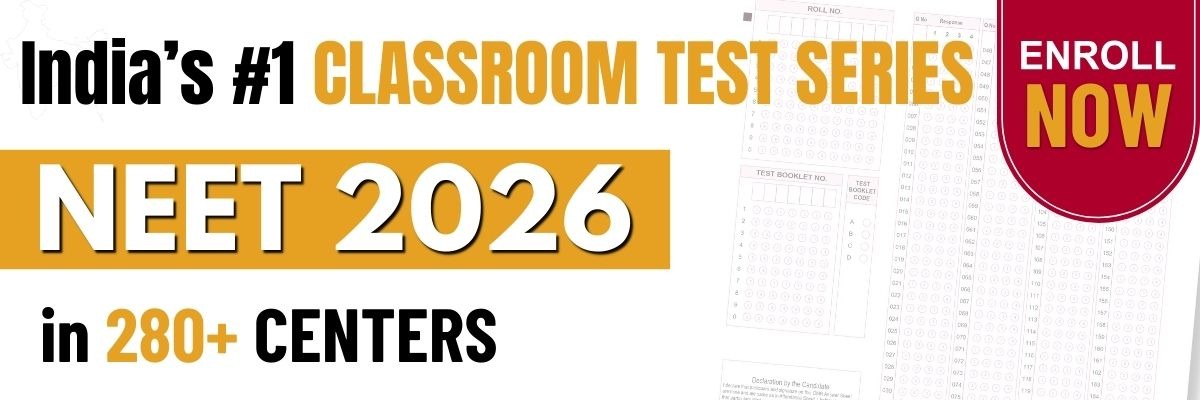Dinoflagellates:
I. Are mostly marine and photosynthetic.
II. Have a cell wall that has stiff cellulose plates on the outer surface.
III. Have two flagella
IV. Have chloroplasts bound by three membranes
The correct statements are:
(1) I, II and III
(2) I, III and IV
(3) II, III and IV
(4) I, II III and IV
डाइनोफ्लैजेलेट:
I. प्राय: समुद्री और प्रकाश संश्लेषक होते हैं।
II. एक कोशिका भित्ति होती है जिसमें बाहरी सतह पर कठोर सेल्यूलोज प्लेट होती हैं।
III. दो कशाभिका होते हैं।
IV. तीन झिल्लिओं से आबद्ध हरितलवक होता हैं।
सही कथन हैं:
(1) I, II और III
(2) I, III और IV
(3) II, III और IV
(4) I, II III और IV
Consider the following characters:
I. Heterotroph organisms
II. A dikaryon stage
III. Cell wall made of chitin
IV. Undergo nuclear mitosis
Which of the above relate to fungi?
(1) I, II and III
(2) I, III and IV
(3) II, III and IV
(4) I, II, III and IV
निम्नलिखित लक्षणों पर विचार करें:
I. विषमपोषी जीव
II. एक द्विकेंद्रकीय प्रावस्था
III. कोशिका भित्ति काइटिन से बनी होती है।
IV. केंद्रकीय समसूत्रण से गुजरना
उपरोक्त में से कौन कवक से संबंधित है?
(1) I, II और III
(2) I, III और IV
(3) II, III और IV
(4) I, II, III और IV
How many of the following statements regarding fungi are true?
I. Asexual reproduction is common by the formation of spores.
II. Their bodies consist of hyphae that many be interconnected to form mycelium.
III. They secrete digestive enzymes onto organic matter and then absorb the products of the digestion.
IV. Fungi can break down almost any carbon containing product.
V. Fungi do not enter symbiotic relationships.
(1) 2
(2) 3
(3) 4
(4) 5
कवक के संबंध में निम्नलिखित में से कितने कथन सत्य हैं?
I. बीजाणुओं के निर्माण से अलैंगिक प्रजनन सामान्य है।
II. उनके शरीर कवक तंतु से बने होते हैं जो कई कवकजाल बनाने के लिए परस्पर जुड़े होते हैं।
III. वे कार्बनिक पदार्थों पर पाचन एंजाइमों का स्राव करते हैं और फिर पाचन के उत्पादों को अवशोषित करते हैं।
IV. कवक लगभग किसी भी कार्बन युक्त उत्पाद को तोड़ सकता है।
V. कवक सहजीवी संबंधों में प्रवेश नहीं करते हैं।
(1) 2
(2) 3
(3) 4
(4) 5
Which of the following is not an edible mushroom?
(1) Agaricus bispora
(2) Pleurotus ostreatus
(3) Lentinula edodes
(4) Amantia phalloides
निम्नलिखित में से कौन एक खाद्य मशरूम नहीं है?
(1) ऐगैरिकस बिस्पोरा
(2) प्लुरोटस ओस्ट्रीटस
(3) लेंटिनुला एडोड्स
(4) ऐमेनिटा फेलाॅयडीज
Consider the following characters:
I. Nuclear envelope
II. Membranes lacking sterols
III. 80s ribosomes
IV. split genes
The character not shared by fungi with other eukaryotes is/are:
(1) II alone
(2) IV alone
(3) II and IV only
(4) III and IV only
निम्नलिखित वर्णों पर विचार करें:
I. केन्द्रकीय स्तर
II. स्टेरोल रहित झिल्लियाँ
III. 80s राइबोसोम
IV. अंतरापित जीन
अन्य यूकेरियोट के साथ कवक द्वारा सहभागी नहीं किया जाने वाला लक्षण है:
(1) केवल II
(2) केवल IV
(3) केवल II और IV
(4) केवल III और IV
Fungi resemble plants in:
(1) Lack of chloroplasts and heterotrophic nutrition
(2) Reproduction by only sexual means
(3) Having a cell wall and vacuoles
(4) Exhibition of bioluminiscence
कवक पादपों से............में मिलता जुलता है।
(1) हरितलवक और परपोषी पोषण की कमी
(2) केवल लैंगिक साधनों द्वारा प्रजनन
(3) कोशिका भित्ति और रिक्तिकाएँ होना
(4) जैव संदीप्ति का प्रदर्शन
Identify the characteristic that is unique to fungi:
(1) Cell wall of glucans and chitin
(2) Lack of chloroplasts and heterotrophic nutrition
(3) Mannitol, trehalose and glycogen as storage products.
(4) Having haploid nuclei and production of spores
उस विशेषता को पहचानें जो कवक के लिए अद्वितीय है:
(1) ग्लूकैन और काइटिन की कोशिका भित्ति
(2) हरितलवक और विषमपोषी पोषण की कमी
(3) भंडारण उत्पादों के रूप में मैनिटॉल, ट्रिहेलोस और ग्लाइकोजन।
(4) अगुणित केंद्रक और बीजाणुओं का उत्पादन होना
What is not true for Mycorrhizae?
I. Nearly 30% of vascular plants have this symbiotic relationship with fungi.
II. The fungus primarily makes nitrogen available to plants.
III. Fungi get organic carbon from plants.
(1) I alone
(2) I and II only
(3) II and III only
(4) I, II and III
कवकमूल के लिए क्या सही नहीं है?
I. लगभग 30% संवहनी पादपों का कवक के साथ यह सहजीवी संबंध है।
II. कवक मुख्य रूप से पादपों को नाइट्रोजन उपलब्ध कराता है।
III. कवक को पादपों से जैविक कार्बन मिलता है।
(1) केवल I
(2) केवल I और II
(3) केवल II और III
(4) I, II और III
Identify the group of fungi that is not correctly matched with all the character given:
|
(1) |
Phycomycetes: |
Mycelium – aseptate and coenocytic / Asexual reproduction by motile zoospores or by nonmotile aplanospores / spores – endogenously produced in sporangium |
|
(2) |
Ascomycetes: |
Mycelium – unbranched and septate / Asexual spores are conidia / Conidia produced endogenously on conidiophores. |
|
(3) |
Basidiomycetes: |
Mycelium – branched and septate / Asexual spores are generally not found. |
|
(4) |
Deuteromycetes: |
Only the asexual or vegetative phase of these fungi are known. |
दिए गए सभी लक्षणों के साथ मेल न खाने वाले कवक के समूह को पहचानें:
|
(1) |
फाइकोमाइसिटीज: | कवकजाल - पटहीन और संकोशिकी / चल बीजाणुओं या अचल बीजाणुओं द्वारा अलैंगिक जनन / बीजाणु - बीजाणुधानी में अंतर्जात उत्पादित |
|
(2) |
ऐस्कोमाइसिटीज: |
कवकजाल - अशाखित और पटहीन / अलैंगिक बीजाणु कोनिडिया होते हैं / कोनिडिया कोनिडियमधर पर अंतर्जात रूप से उत्पादित |
|
(3) |
बेसिडियोमाइसिटीज: |
कवकजाल - शाखित और पटयुक्त / सामान्यत: अलैंगिक बीजाणु नहीं पाए जाते हैं। |
|
(4) |
ड्यूटेरोमाइसिटीज: |
इन कवकों के केवल अलैंगिक या कायिक चरण ज्ञात हैं। |
Match the names of the scientists with contribution and choose your answer from the codes given below:
|
Scientists |
Contribution |
||
|
I. |
Beijerinck |
1. |
Gave the name ‘virus’ |
|
II. |
Luc Montagnier |
2. |
Gave the term ‘conragium vivum fluidum’ |
|
III. |
Pasteur |
3. |
Discovered bacteriophages |
|
IV. |
Twort |
4. |
Crystallized TMV |
|
V. |
Stanley |
5. |
Isolated HIV |
Codes:
|
I |
II |
III |
IV |
V |
|
|
(1) |
2 |
5 |
1 |
3 |
4 |
|
(2) |
2 |
3 |
1 |
5 |
4 |
|
(3) |
4 |
5 |
1 |
3 |
2 |
|
(4) |
4 |
3 |
1 |
5 |
2 |
वैज्ञानिकों के नामों का उनके योगदान के साथ मिलान कीजिए और नीचे दिए गए संकेतों से अपना उत्तर चुनिए:
|
वैज्ञानिक |
योगदान |
||
|
I. |
बेजेरिनेक |
1. |
‘विषाणु’ का नामकरण किया |
|
II. |
ल्यूक मॉन्टैग्नियर |
2. |
‘जीवित तरल संक्रामक’ का नाम दिया |
|
III. |
पाश्चर |
3. |
जीवाणुभोजियों की खोज की |
|
IV. |
ट्वार्ट |
4. |
TMV को क्रिस्टलीकृत किया |
|
V. |
स्टेनले |
5. |
HIV को विलगित किया |
Codes:
|
I |
II |
III |
IV |
V |
|
|
(1) |
2 |
5 |
1 |
3 |
4 |
|
(2) |
2 |
3 |
1 |
5 |
4 |
|
(3) |
4 |
5 |
1 |
3 |
2 |
|
(4) |
4 |
3 |
1 |
5 |
2 |






